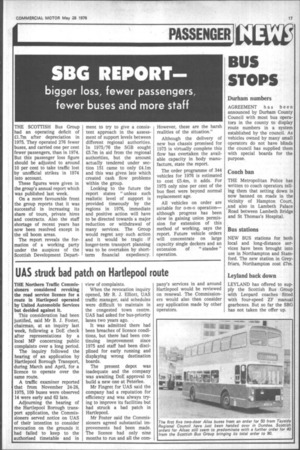SBG REPORT
Page 19

If you've noticed an error in this article please click here to report it so we can fix it.
bigger loss, fewer passengers, fewer buses and more staff
THE SCOTTISH Bus Group had an operating deficit of E1.7m after depreciation in 1975. They operated 276 fewer buses, and carried one per cent fewer passengers, than in 1974. But this passenger loss figure should be adjusted to around 10 per cent to take traffic lost by unofficial strikes in 1974 into account.
These figures were given in the group's annual report which was published last week.
On a more favourable front the group reports that it was successful in increasing its share of tours, private hires and contracts. Also the staff shortage of recent years has now been resolved except in the oil boom areas.
The report reveals the formation of a working party under the auspices of the Scottish Development Depart ment to try to give a consistent approach in the assessment of support levels between different regional authorities. In 1975/76 the SGB sought £5.7m in aid from the regional authorities, but the amount actually tendered under section 151 came to only £4.1m and this was given late which created cash flow problems within the group.
Looking to the future the report states "unless such realistic level of support is provided timeously by the regions in 1976, immediate and positive action will have to be directed towards a major reduction or withdrawal of many services. The Group would regret any such action and it would be tragic if longer-term transport planning was to be overtaken by shortterm financial expediency. However, these are the harsh realities of the situation."
Although the delivery of new bus chassis promised for 1975 is virtually complete this flow has overtaken the available capacity in body manufacture, state the report.
The order programme of .344 vehicles for 1976 is estimated to cost £5.4m, it adds. For 1975 only nine per cent of the bus fleet were beyond normal replacement age.
All •vehicles on order are suitable for o-m-o operation— although progress has been slow in gaining union permission for extension of this method of working, says the report. Future vehicle orders will concentrate on large capacity single deckers and an extension of "standee " operation.




















































































